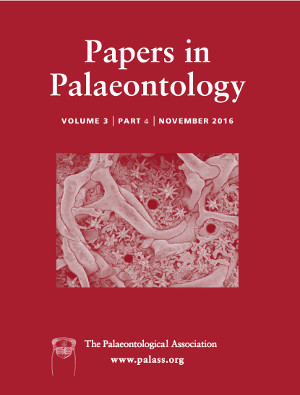Reg. Charity No. 1168330

A new actinopterygian, Calaichthys tehul gen. et sp. nov. is described on the basis of a few, well‐preserved specimens from the Anisian Cerro de Las Cabras Formation, Cuyo Basin in Mendoza Province. The new genus shows a combination of primitive characters (e.g. deep posterior region of the maxilla contacting the preopercle, a suspensorium backwardly oriented) and more advanced characters (e.g. distally segmented fin rays, hemiheterocercal caudal fin) and is thus considered to be a ‘subholostean’ fish. The new taxon is assigned to Redfieldiiformes on the basis of its single branchiostegal plate‐like ray, a median gular plate, pectoral fins with stout, stiff, mainly non‐segmented and distally branched fin rays, long and robust fringing fulcra in all fins, basal fulcra bordering both lobes of the caudal fin, and opposite dorsal and anal fins. Calaichthys is characterized by a combination of characters some of which are unique among redfieldiiforms (i.e. strongly ornamented but thin scales with a serrated posterior margin, smooth skull roof bones, extrascapulars with a bifid posterior margin, three suborbital bones, a hatchet‐shaped preopercle, rectangular and slender opercle, deep mouth gape, entopterygoid and ectopterygoid with small pointed teeth disposed in several series, unornamented rostral bone, massive pectoral fins and delicate dorsal, pelvic and anal fins). Calaichthys provides novel information about the anatomy of redfieldiiforms, in particular in relation with the fins and associated scaly elements, as well as the scale morphology and their disposition over the body. Our work confirms for the first time that redfieldiiforms occur in South America. Redfieldiiforms seem to have originated in Gondwana and shown two diversity peaks: in the Anisian and the Carnian. Calaichthys is coeval with those redfieldiiforms of the Middle Triassic (Anisian) of Africa and Australia dwelling in ephemeral lakes.